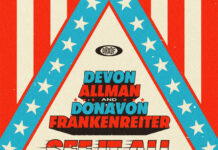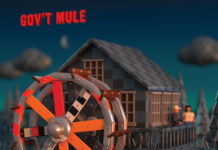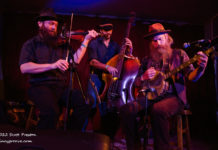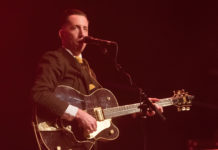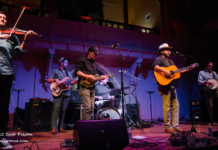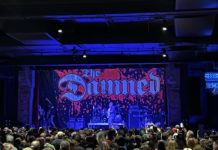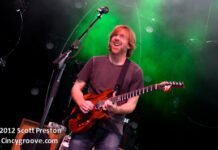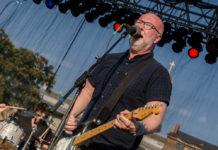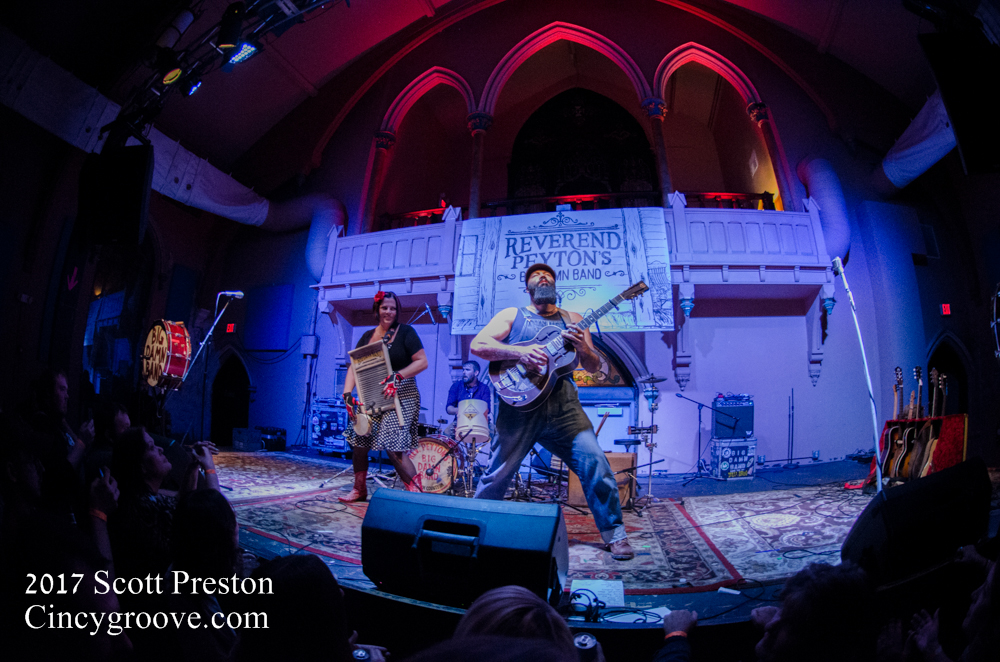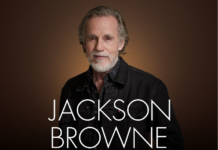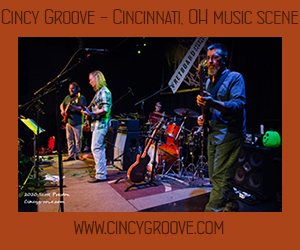
Photo by Scott Preston
December 15, 2010—New York – Today, the Rock and Roll Hall of Fame Foundation announced the Alice Cooper Band, Neil Diamond, Dr. John, Darlene Love and Tom Waits as its 2011 performer inductees. Also being inducted this year as individual recipients of the Ahmet Ertegun Award are Jac Holzman and Art Rupe. The Award for Musical Excellence (previously the Sidemen category) will be presented to Leon Russell. The 26th annual ceremony will take place on Monday, March 14, 2011, at the Waldorf Astoria in New York City and be broadcast on Fuse, Madison Square Garden’s national music television network.
“We are pleased to welcome these artists and executives into the Rock and Roll Hall of Fame,” said Rock and Roll Hall of Fame Foundation President and CEO Joel Peresman. “They truly represent the variety of people that have defined and continue to influence music and the business of Rock and Roll.”
The performer Inductees are:
· Alice Cooper Band
· Neil Diamond
· Dr. John
· Darlene Love
· Tom Waits
Ahmet Ertegun Award recipients (nonperformers):
· Jac Holzman
· Art Rupe
Award for Musical Excellence Award (previously the Sidemen category):
· Leon Russell
The 2011 Rock and Roll Hall of Fame performer inductees were chosen by more than 500 voters of the Rock and Roll Hall of Fame Foundation. Artists are eligible for inclusion in the Rock and Roll Hall of Fame 25 years after the release of their first recording.
All inductees are ultimately represented in the Rock and Roll Hall of Fame and Museum in Cleveland, Ohio. Through approaches as creative and diverse as the music itself, the Rock and Roll Hall of Fame and Museum tells the story of rock music with its exhibits, education programs and Library and Archives.
Presenters and performers at the induction will be announced at a later date. The Rock and Roll Hall of Fame Induction Ceremony will be broadcast on Fuse; more information can be found at fuse.tv.
About the 2011 Rock and Roll Hall of Fame Inductees:
ALICE COOPER BAND
Before there was Ozzy Osbourne, Marilyn Manson or KISS, there was Alice Cooper, the original self-proclaimed “rock villain.” Born Vincent Furnier, Cooper and his mighty band of the same name – lead guitarist Glen Buxton, rhythm guitarist Michael Bruce, bass player Dennis Dunaway and drummer Neal Smith – pioneered the dark spectacle of heavy metal with their huge blues-rock sound and extravagant stage show. Drawing from horror movies and vaudeville, Cooper brought a new level of visual theatrics to arenas with guillotines, electric chairs, boa constrictors and fake blood; their 1973 tour broke box office records previously held by the Rolling Stones, and raised the bar for major rock tours. What made it stick were some of the catchiest, most reckless hard-rock songs of all time: “Eighteen,” “School’s Out,” “No More Mr. Nice Guy.” Along with the New York Dolls and David Bowie, Alice Cooper was a starting point for the glam rock of the 1970s; it’s impossible to imagine the hair metal of the 1980s without them. You can hear and see the band’s influence in bands from the Sex Pistols to Guns n’ Roses. The original lineup split in the mid-Seventies, and singer Cooper would continue on with an evolving lineup; in the meantime, the pure shock value of America’s first shock rockers has faded, but their legacy is safe.
NEIL DIAMOND
Neil Diamond’s half-century as a prolific singer, songwriter and recording artist (nearly four decades on Columbia Records) is one of the eternal verities of American popular music. He began taking pre-med studies at New York University, but was interrupted in 1962 by an offer to write songs for $50 a week at 1619 Broadway, the Brill Building. Like many writers there, including fellow Brooklynites Neil Sedaka and Carole King, Diamond was writing as much for himself as for others. Thus, “I’m a Believer” was grabbed by the Monkees, who turned it into the top song of 1966 (followed three months later by their take on Neil’s “A Little Bit Me, A Little Bit You”). No matter, because Bert Berns had already signed Diamond to his new Bang Records indie label. He rocked the Hot 100 in 1966 with “Solitary Man” and “Cherry, Cherry,” followed in 1967 by “Girl, You’ll Be a Woman Soon,” “Thank the Lord for the Night Time” and “Kentucky Woman” (a Top 40 hit for Deep Purple in 1968). Produced by Brill-mates Jeff Barry and Ellie Greenwich, these acoustic-guitar-driven rock and roll songs were the first notches in Neil’s singles discography. He has had more than 70 U.S. chart entries to date, including “Sweet Caroline,” “Holly Holy” and “Cracklin’ Rosie” (along with some 48 charted albums). He has stayed true to his roots as a rocker onstage, including a performance at the Band’s Last Waltz concert. Diamond continues to be a world-class, top-grossing concert draw, slinging his custom Gibson flat-top with a fury that remains undiminished at age 69.
DR. JOHN
New Orleans’ own Dr. John has been recording for more than 50 years. He is steeped in the rhythms and traditions of the city, and has spent his career championing its music. As he told New Orleans rhythm & blues historian Jeff Hannusch, “[New Orleans music] is part of whatever I’m about. The importance of it is beyond anything I do.” Born Malcolm John “Mac” Rebennack, he learned piano and guitar as a child. Schooled by Crescent City legends like Walter “Papoose” Nelson, James Booker and Cosimo Matassa, Rebennack began recording in 1957; between 1956-1963, more than 50 of his songs were recorded in New Orleans. In 1965, Rebennack moved to Los Angeles and worked as a session player. Working with Harold Battiste, he created the Dr. John the Night Tripper character, a tribute to New Orleans’ musical and spiritual traditions that meshed perfectly with psychedelia. His first album, Gris-Gris, was a masterpiece, evoking voodoo legends over a funky mix. In the first half of the 1970s, he released a series of albums that mixed New Orleans classics with his own original material, all driven by his remarkable piano playing and great bands, most notably his collaboration with Allen Toussaint and the Meters on “Right Place, Wrong Time,” a smash funk hit. He has produced albums for Professor Longhair and Van Morrison, collaborated with Doc Pomus on a group of songs recorded by B.B. King on There Must Be a Better World Somewhere (1981), and released several acclaimed solo piano records. In recent years he has become a spokesman for New Orleans and its musical history, all the while continuing to record creative, challenging music.
DARLENE LOVE
Darlene Love was a high-school sophomore in California with a powerful church-choir voice when she joined the popular girl group the Blossoms as their first lead singer in 1958. They shot to immortality in 1962, when producer Phil Spector used them as surrogates on his new Crystals’ singles. With “He’s a Rebel” and “He’s Sure the Boy I Love,” Darlene Love turned into a familiar (though uncredited) voice on radio and records; she also became a member of Spector’s Bob B. Soxx and the Blue Jeans. Darlene’s own 1963 hits – “(Today I Met ) The Boy I’m Gonna Marry,” “Wait Till My Bobby Gets Home,” “A Fine Fine Boy,” “Christmas (Baby Please Come Home)” – made her a household name. By 1964, the Blossoms, who were regulars on TV’s Shindig, had graduated to first-call A-list session singers (check them on Elvis Presley’s ’68 Comeback Special). Darlene left in 1973 to start a family, but the early-Eighties roots-rock revival drew her back. She starred in the Broadway “jukebox” musical Leader of the Pack (based on the Ellie Greenwich songbook). U2 later invited her to sing on their 1987 remake of “Christmas (Baby Please Come Home).” Ever since, Love’s annual wall-of-sound performance of the song (with Paul Shaffer and the CBS Orchestra) on David Letterman’s final pre-Christmas-hiatus show has been a high point of the season.
TOM WAITS
Only one songwriter could be covered by the Ramones (“I Don’t Want to Grow Up”) and the Eagles (“Ol’ ‘55”). Beginning with his first album in 1973, Tom Waits has carved out a unique place in rock and roll. His music mixes Chicago blues, parlor ballads, beat poetry, pulp-fiction parlance and – when you least expect it – heart-breaking tenderness. His enormously influential live shows combine elements of German cabaret, vaudeville and roadhouse rock. After establishing a successful early style as a wry singer-songwriter, Waits went through a dramatic expansion with Swordfishtrombones (1983). Disregarding musical borders and commercial considerations, he set off in wild pursuit of the Muse. Waits has composed film scores, musical theatre and an operetta. He has co-written with Keith Richards and William Burroughs. His songs have been covered by Screamin’ Jay Hawkins, Solomon Burke, Marianne Faithfull, the Neville Brothers, Robert Plant and Alison Krauss and the Blind Boys of Alabama. He has recorded with the Rolling Stones, Bonnie Raitt, the Replacements and Roy Orbison. A tribute to his great influence is how many of his songs have been recorded by artists who usually write their own – including Bruce Springsteen (“Jersey Girl”), Tim Buckley (“Martha”), Johnny Cash (“Down There by the Train”), Bob Seger (“16 Shells from a Thirty-Ought Six”), T-Bone Burnett (“Time”), Tori Amos (“Time”), Steve Earle (“Way Down In the Hole”), Elvis Costello (“Innocent When You Dream”) and Rod Stewart (“Downtown Train”).
About the Ahmet Ertegun Award recipients:
JAC HOLZMAN
Jac Holzman founded Elektra Records in 1950, initially operating it out of his college dorm room. Headquartered in New York City, the label primarily focused on folk music throughout the 1950s and early 1960s, building a catalog of recordings by such leading lights in the field as Josh White, Jean Ritchie, Theodore Bikel, Tom Paxton, Tom Rush, Phil Ochs and Judy Collins. Elektra’s Nonesuch label was established in the 1960s to highlight a diverse array of ethnic recordings, as well such specialist genres as baroque and ragtime music. But with the signing of the Paul Butterfield Blues Band in the mid-1960s, Jac Holzman embarked on the creation of the next generation of “folk” music on Elektra Records, expanding his spheres of interest to Los Angeles with the Doors and Love, to Detroit for the Stooges and MC5, and to London with Queen. And closer to home, he engaged the singer-songwriter movement of the early 1970s with the signings of the New York-based Carly Simon and Harry Chapin.
ART RUPE
Art Rupe founded Los Angeles-based Specialty Records in the years immediately following World War II. Specialty, which is best known for the series of groundbreaking, earthshaking Little Richard singles that it released in the second half of the 1950s, ranks with the foremost of the pioneering independent record labels of its era. Early on, it dominated the rhythm & blues charts with Rupe-produced Number One hits by the likes of Roy Milton and Percy Mayfield and the gospel market with groups like the Pilgrim Travelers and the Soul Stirrers (the quartet from which Sam Cooke emerged). Rupe’s trips to New Orleans in the early 1950s yielded such classics as Lloyd Price’s “Lawdy Miss Clawdy” (with Fats Domino on piano) and Guitar Slim’s “The Things That I Used to Do” (with Ray Charles on piano). And following the label’s breakthrough with Little Richard, Art Rupe signed both Don and Dewey and Larry Williams, with whom he recorded rock and roll standards later covered by the Righteous Brothers and the Beatles, respectively.
About the Musical Excellence Award recipient:
LEON RUSSELL
Leon Russell has been called a rock and roll Renaissance man, and indeed there is little that this piano-playing legend from Oklahoma hasn’t done. He was a busy session musician in Los Angeles in the 1960s, playing on countless records, including many of Phil Spector’s greatest productions and hits by the Byrds, Paul Revere and the Raiders and Gary Lewis and the Playboys, as well as George Harrison’s Concert for Bangladesh benefit in 1971. His churchy, rolling piano figures and sly, drawling vocals pegged him as a unique stylist, and his evangelical outpouring of energy from the stage turned his concerts into, as Russell himself put it, “an artificially induced religious experience.” Russell exploded into public view in 1970, with the release of Joe Cocker’s live double-album Mad Dogs and Englishmen (for which Russell served as ringmaster) and his own self-titled debut album. Leon Russell and the Shelter People appeared a year later and became his first gold album. Carney, released in 1972, held the Number Two position on Billboard’s album chart for a month and yielded his highest-charting single, “Tight Rope” (Number 11). The sprawling, three-disc Leon Live documented the full Leon Russell concert experience at its chaotic, charismatic peak in 1973. Russell explored his roots in country, recording a set of covers by Hank Williams and others (for which he used the pseudonym Hank Wilson) in 1976 and a well-received collaboration with Willie Nelson, the double-album One for the Road, in 1979. Russell’s career got its latest, greatest push when Elton John – who’s often cited Russell as an early idol – approached him about a collaboration. The resulting album, The Union (2010), entered the Billboard chart at Number Three – Russell’s highest showing since 1972’s Carney. Moreover, the single “If It Wasn’t for Bad,” written by Russell, has earned a Grammy nomination for Best Pop Collaboration With Vocals.
For the latest information on inductee announcements, ticket packages, events, and other programs, fans can sign up for the Rock and Roll Hall of Fame newsletter at rockhall.com/e-newsletter.
For more information on the Rock and Roll Hall of Fame and Museum including in-depth bios, picture galleries and videos on each Inductee visit rockhall.com.
About the Rock and Roll Hall of Fame Foundation and Museum: The Rock and Roll Hall of Fame Foundation was established by legendary record executive Ahmet Ertegun and a group of music business executives to honor the artists that have defined rock and roll and have inspired and continue to inspire a generation. The Rock and Roll Hall of Fame and Museum, Inc. is the nonprofit organization that exists to educate visitors, fans and scholars from around the world about the history and continuing significance of rock and roll music. It carries out this mission both through its operation of a world-class museum designed by I.M. Pei in Cleveland, Ohio that collects, preserves, exhibits and interprets this art form and through its library and archives as well as educational programs. For further information, please visit rockhall.com.


